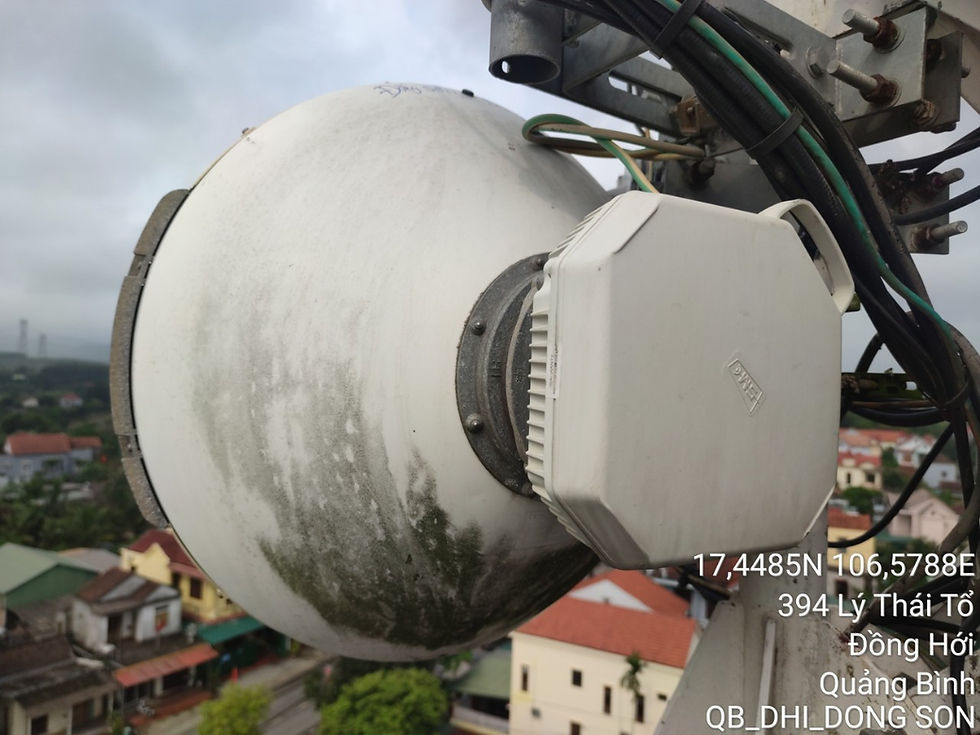The future of microwave transmission as a lastmile solution in mobile communication
- Tien Hoang Minh
- Jul 11, 2024
- 3 min read

The future of microwave transmission as a lastmile solution in mobile communication is influenced by several factors, including technological advancements, network scalability, and the demand for reliable and high-speed connectivity. Here’s an overview of the future outlook for microwave transmission in the last mile of mobile communication networks:
1. Supporting 5G and Beyond
High-Capacity Backhaul: Microwave transmission will continue to play a critical role in providing high-capacity backhaul for 5G networks. As 5G deployments expand, there will be an increasing need for efficient and scalable last mile solutions to connect base stations and small cells to the core network.
Low Latency Requirements: Microwave links are capable of delivering low-latency connectivity, which is essential for supporting real-time applications and services enabled by 5G, such as autonomous vehicles, remote surgery, and augmented reality.
2. Technological Advancements
Advanced Modulation Techniques: Ongoing advancements in modulation techniques, such as QAM (Quadrature Amplitude Modulation) and OFDM (Orthogonal Frequency Division Multiplexing), enhance the spectral efficiency and data throughput of microwave links, making them more capable of meeting the bandwidth demands of future mobile communication networks.
Multi-Gigabit Capacity: Innovations in microwave technology are pushing towards multi-gigabit capacity per link, allowing operators to support increasing data traffic and higher user densities in urban and suburban areas.
3. Integration with Fiber and Small Cells
Hybrid Networks: Integrating microwave transmission with fiber optic networks and small cell deployments enables operators to build hybrid networks that combine the flexibility and coverage advantages of microwave links with the high capacity and reliability of fiber.
Small Cell Backhaul: Microwave transmission serves as a cost-effective solution for backhauling traffic from small cells deployed in dense urban environments, where laying fiber may be challenging or costly.
4. Edge Computing and Distributed Architectures
Edge Connectivity: Microwave links facilitate connectivity to edge computing nodes and distributed data centers, enabling low-latency access to computing resources and accelerating the delivery of latency-sensitive applications.
Cloud-RAN and Virtualization: As mobile networks move towards Cloud-RAN (Radio Access Network) and virtualized network architectures, microwave transmission supports the transport of centralized baseband processing to remote locations, optimizing network efficiency and reducing operational costs.
5. Energy Efficiency and Sustainability
Green Solutions: Advancements in energy-efficient microwave equipment and deployment practices contribute to reducing the carbon footprint of lastmile networks. Innovations include solar-powered sites, optimized power consumption, and eco-friendly materials.
Environmental Impact: Deploying microwave links in environmentally sensitive areas and leveraging renewable energy sources aligns with sustainability goals and regulatory requirements, ensuring minimal environmental impact.
6. Security and Reliability
Cybersecurity: Enhancing the cybersecurity measures of microwave transmission systems to protect against cyber threats and ensure the integrity of data transmitted over lastmile networks.
Network Resilience: Designing resilient microwave links with built-in redundancy and failover mechanisms to withstand physical disruptions, natural disasters, and network congestion, ensuring continuous connectivity and minimal service downtime.
7. Regulatory and Spectrum Management
Spectrum Allocation: Continued spectrum allocation efforts to support the growing demand for mobile broadband services and enable efficient use of available frequency bands for microwave transmission in lastmile deployments.
Compliance and Standards: Adhering to regulatory frameworks and industry standards ensures interoperability, spectrum efficiency, and compatibility with global telecommunications ecosystems.
In summary, the future of microwave transmission as a lastmile solution in mobile communication networks is characterized by innovation, efficiency, and adaptability to meet the evolving needs of 5G and future mobile technologies. As operators strive to enhance network capacity, coverage, and reliability, microwave links will remain integral in extending high-speed connectivity to end users and supporting the digital transformation across industries.




Comments